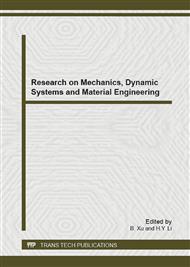p.41
p.45
p.53
p.57
p.61
p.69
p.75
p.79
p.84
Analysis of Dynamic Behavior of Ultra-High Voltage Porcelain Arresters with New Type Lead Dampers
Abstract:
Dynamic behavior of the 1100kV porcelain arresters with and without the new type lead dampers and are investigated,based on theoretical analysis and finite element analysis. The results of theoretical analysis show that the dynamic response of 1100kv porcelain arrester can be decreased by damping measures, which can change the dynamic behavior of equipment. The results of finite element analysis show that the primary frequencies of these two structures are between 1Hz and 10Hz and the differences between them is not obvious, which indicated that the overall stiffness of the two structures is low and the frequency and vibration mode of these two structures have hardly been changed by the lead dampers. The level modes dominated the equipment, while vertical modes and torsional modes are not obvious. Owning to an effect of increment of damping device with the new type lead dampers, there is a reduction by 40% above in the maximum root stress of porcelain bushing. In the meantime, the new type lead dampers can also decrease the relative displacement at the top of equipment.
Info:
Periodical:
Pages:
61-68
Citation:
Online since:
December 2012
Authors:
Price:
Сopyright:
© 2013 Trans Tech Publications Ltd. All Rights Reserved
Share:
Citation:


